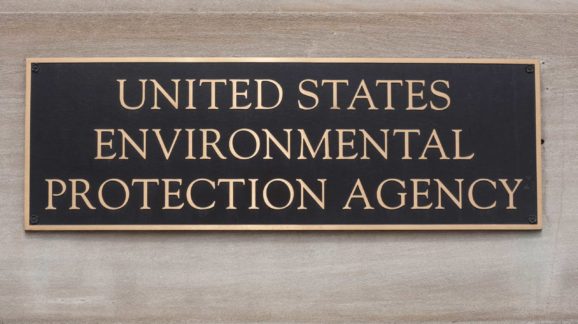EPA Rule Will Strengthen Transparency and Accountability in Agency Science

Photo Credit: Getty
The Environmental Protection Agency (EPA) this week finalized its science transparency rule. The rule requires the EPA to clearly identify the “pivotal” scientific studies underpinning the agency’s regulatory decisions, make those studies publicly available to the extent permitted by law, and give greater weight to pivotal studies where the health effects data are either available to the public or available through restricted access in a manner sufficient for independent validation.
The rule allows the EPA administrator to waive the latter requirement on a case-by-case basis if he determines that independent validation of the underlying data is infeasible or in “conflict with laws and regulations governing privacy, confidentiality, confidential business information, or national security.” In such cases, however, the administrator must explain his reasons for deeming a study to be pivotal despite its being incapable of independent validation.
In addition, the rule requires the EPA to evaluate whether to initiate its own peer review of pivotal studies that have already undergone journal peer review.
All in all, the EPA has produced a straightforward good-government reform. Transparency is an essential part of both science and self-government. As my CEI colleague Myron Ebell put it, paraphrasing The Washington Post’s motto: “Scientific integrity dies in darkness.”
Science is a mode of inquiry in which evidence rather than authority determines the validity of claims about the world. The hallmark of science is the testing of hypotheses against data. Confidence in the agreement of hypothesis and data requires transparency—the ability of external reviewers to check each step of the original researchers’ work.
For decades, the EPA funded “secret science”—air pollution epidemiological studies where the underlying data are hidden not only from the public but also from the agency itself.
Because of privacy and confidentiality concerns, secret data may always be a significant part of air pollution epidemiology. However, by prioritizing studies where the data are available to independent reviewers, the transparency rule should put pressure on researchers to design studies that both safeguard privacy and allow external verification.
The transparency rule mentions several privacy-protecting techniques already in common use. Those include restricted or tiered access to the underlying dose-response data through confidentiality agreements with the originating author or institution, access to a refined or redacted dataset that anonymizes the more sensitive portions of the health dataset, and restricted access data repositories or secure data enclaves.
Even the rule’s waiver provision may help rein in secrecy by requiring an official apologia each time the administrator chooses to classify a study as pivotal despite its exemption from independent validation.
Requiring the EPA to consider additional peer review for some published studies is also a wise measure. Peer review is often called the “gold standard” in science, but that is misnomer. Peer review ensures merely that the journal’s reviewers did not find obvious errors in a study and consider it interesting enough (or politically valuable enough) to publish. Many published studies must later be retracted due to material errors not detected during peer review. Requiring the EPA to consider initiating a more thorough examination can only help strengthen scientific integrity.
Even the rule’s simplest requirement—to clearly identify which studies are pivotal—will strengthen transparency. In many regulatory proceedings, the EPA considers literally hundreds of scientific studies. In the past, this has facilitated sometimes murky “weight of evidence” assessments as the basis for regulatory decisions. The rule directs the EPA to identify the specific studies that are pivotal in its decision to regulate a particular pollutant and at what level of stringency.
Because the transparency rule codifies all these requirements, it will help the public hold the agency accountable. As EPA Administrator Andrew Wheeler explained this week at CEI’s virtual forum on the rule:
The key thing is we are codifying best practices. Going forward, people will have a cause of action, be able to take us to court, if we don’t follow this regulation. This empowers the American people to demand transparency from this agency. So that is why we thought it is important to do this as a rulemaking rather than just a memo from myself to staff.
An obvious question is whether the incoming Biden administration will rescind the transparency rule, which has been subjected to all manner of misrepresentation by progressive politicians, pundits, and activists. Repeal will not be easy.
The EPA developed the rule through two comment periods spanning almost two years, based on more than one million comments. The transparency rule is an internal management rule, so it is not subject to the Congressional Review Act. It is not an executive order or guidance document, so it cannot be undone by pen or phone.
To rescind it, the Biden administration will have to initiate a new public notice and comment rulemaking. Moreover, it will have to argue, on the record, that making pivotal air pollution science less transparent is a good idea. I say, bring it on!